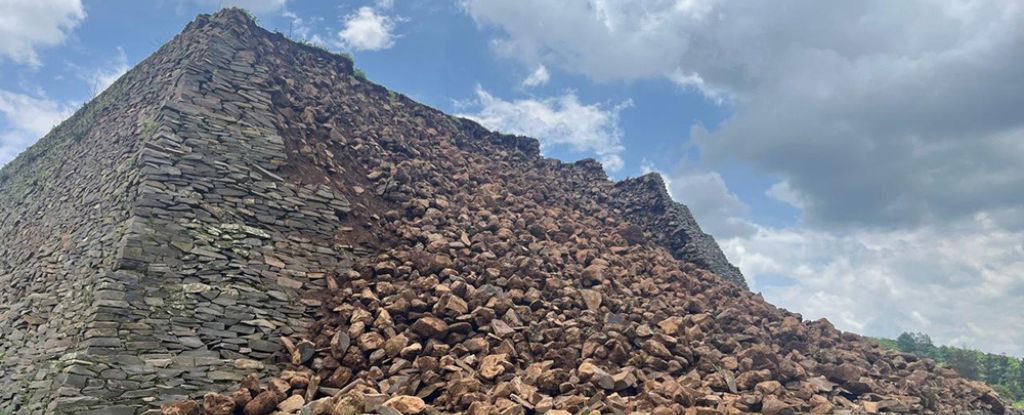A dust devil looks a bit like a tornado but is weaker and rarely lasts more than a minute or so.
It’s a twisting column of warmed air gliding across sun-warmed ground, visible through the dust it kicks up. Although usually benign, dust devils can occasionally kill.
Dust devils have been appearing on Mars since the 1970s. They have been observed from both the ground and orbit.
The more dust in the Martian atmosphere, the warmer and more restless it becomes, and this can escalate into a global dust storm.
When the dust settles, it can coat and disable the solar panels that are essential to many of the instruments we’ve landed on the planet.
There’s a lot we don’t know about how these devils work. But new research published this week in Nature Communications has recorded what dust devils sound like – and provided new insight into how they work.
But it also raises questions about how future astronauts would recognize and interpret sounds on the red planet.
Since the disappearance of the last rivers and lakes, there has been enormous erosion on Mars, including at the landing sites of the two current NASA rovers, Curiosity and Perseverance.
Although the erosive power of a single dust devil is tiny, a billion years’ worth of dust devils could potentially have eroded kilometers of rock.
So there are many reasons to want to better understand how dust devils work.
And we now know what a dust devil from Mars sounds like, thanks to new study led by Naomi Murdoch of the University of Toulouse in France.
Many passing dust devils have been captured by cameras on Mars landers and rovers, but Murdoch and her team report one dust devil that luckily flew by just over the Perseverance rover, which was on the floor of Jezero Crater, on September 27, 2021 .
The rover’s masthead camera, dubbed SuperCam, contains a microphone that recorded the sound of the wind rising and falling as the dust devil passed.
In detail, the wind noise increased as the vortex’s front wall arrived, followed by a pause representing the still air in the eye of the vortex, before a second episode of wind noise as the vortex’s rear wall passed.
This took less than ten seconds and you can hear the audio here (https://jirafeau.isae-supaero.fr/f.php?h=2JWSkdJR&p=1) (set the volume to maximum). Other sensors also provided information. They showed that the pressure between the two wind noises dropped to a minimum – which I find more consistent with suction than blowing – and also recorded impacts of individual dust grains on the rover.
The dust devil was about 25 meters in diameter, at least 118 meters high, and moved across the ground at about five meters per second.
The maximum wind speed in the rotating vortex was probably just under 11 meters per second, which corresponds to a “fresh” to “strong” breeze on Earth.
Did it really sound like that? Hearing a recording pretending to be the sound of the Martian wind is all well and good, but would we really hear it if we were there ourselves? The first thing to note is that this really does emerge as “real sound”, unlike other data such as images or radio signals that are converted to sound (a process called sonification) such as e.g. B. the so-called sound of two colliding black holes or radio noise from the atmosphere of Venus.
The Dust Devil audio file contains actual sound waves captured by a microphone on Mars.
The atmosphere there is much thinner than on Earth (surface pressure on Mars is less than one-hundredth that of ours), so the high-frequency component of sound carries little (scientists say it’s “muffled”).
The result is that the wind sounds much lower than a similar wind on Earth.
The only other planetary body we have true sound recordings of is Venus, where in 1982 two Soviet “Venera” landers recorded wind and lander operation sounds.
However, if you were on Mars, you could never hear the wind directly with your own ears.
If you were foolish enough to expose your ears to the Martian atmosphere, the low external pressure would rupture your eardrums and you would be instantly deaf and unable to breathe.
If you went outside in a pressurized space suit (a much more sensible idea) what you would hear would depend on how well the sound waves are transmitted through the hard helmet shell and how those are then converted back to sound waves in the air in your helmet.
In other words, you would hear a distorted version of what an external microphone would pick up. Imagine walking the earth with your head in a goldfish bowl and you become part of the idea.
If future human explorers on Mars want to hear what’s going on in the external environment, they’ll presumably rely on a suit-mounted microphone feeding wireless earphones, although I can’t find any evidence that this has already been accounted for on Mars – Suit design.
This all boils down to the fact that recording from an external microphone is the best way to represent sounds on Mars or any other planet with an atmosphere.
If you want to hear more sounds from Mars, NASA has a collection of audio recordings that you can listen to.





